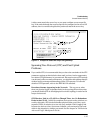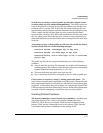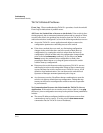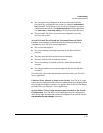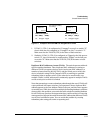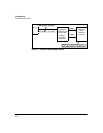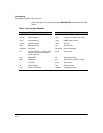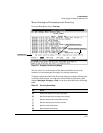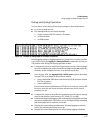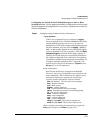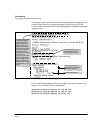
Troubleshooting
Using Logging To Identify Problem Sources
Using Logging To Identify Problem
Sources
Event Log Operation
The Event Log records operating events as single-line entries listed in chrono-
logical order, and serves as a tool for isolating problems. Each Event Log entry
is composed of five fields:
Severity Date Time System Module Event Message
I ports: bled
10:52:32 08/05/01 port A1 ena
Figure C-7. Anatomy of an Event Log Message
Severity is one of the following codes:
I (information) indicates routine events.
W (warning) indicates that a service has behaved unexpectedly.
C (critical) indicates that a severe switch error has occurred.
D (debug) reserved for HP internal diagnostic information.
Date is the date in mm/dd/yy format that the entry was placed in the log.
Time is the time in hh:mm:ss format that the entry was placed in the log.
System Module is the internal module (such as “ports” for port manager) that
generated the log entry. If VLANs are configured, then a VLAN name also
appears for an event that is specific to an individual VLAN.
Table C-1 on page
C-24 lists the individual modules.
Event Message is a brief description of the operating event.
The event log holds up to 1000 lines in chronological order, from the oldest to
the newest. Each line consists of one complete event message. Once the log
has received 1000 entries, it discards the current oldest line each time a new
line is received. The event log window contains 14 log entry lines and can be
positioned to any location in the log.
The event log will be erased if power to the switch is interrupted.
C-23



